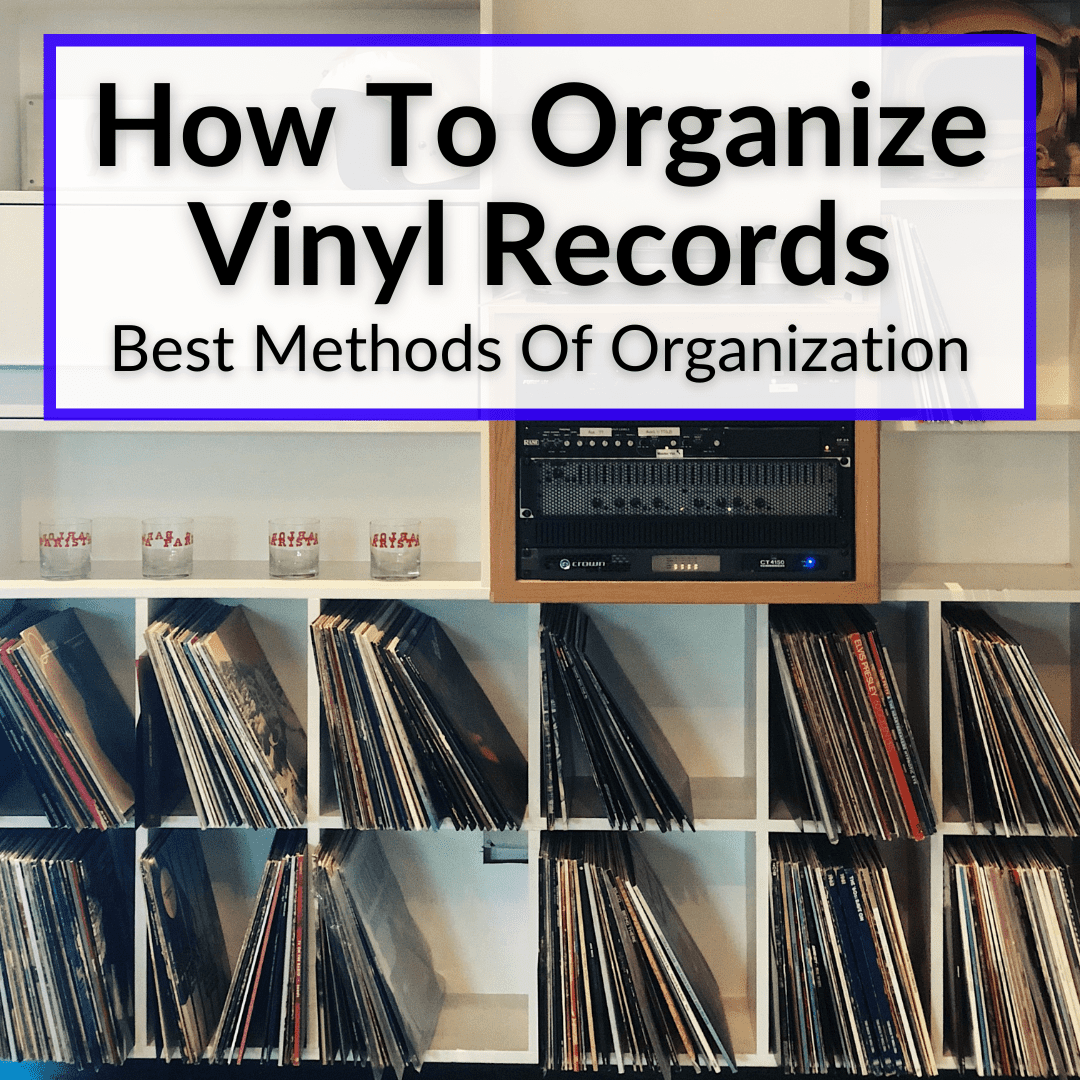
But the larger it grows, the larger a common problem grows.
Figuring out how to organize my vinyl records so that I can always find the one I’m looking for.
Collectors use many different organizational methods.
But most fall apart once your collection starts getting large.
You need a system that works for collections of all sizes.
Keep reading to learn several methods for organizing your vinyl records, including the best method for most people.
Contents
How To Organize Vinyl Records
Organizing your vinyl records is not hard. All you need is a record collection, some time, ample storage space. And probably some patience, depending on the size of your collection.
The only other thing you need is a plan. You need to know how you want to organize your record collection, before you actually get started organizing them. Otherwise you just end up wasting a bunch of time.
Let’s look at the best options. We’ll begin with a combined method that we prefer for larger collection.
Step 1: Genres
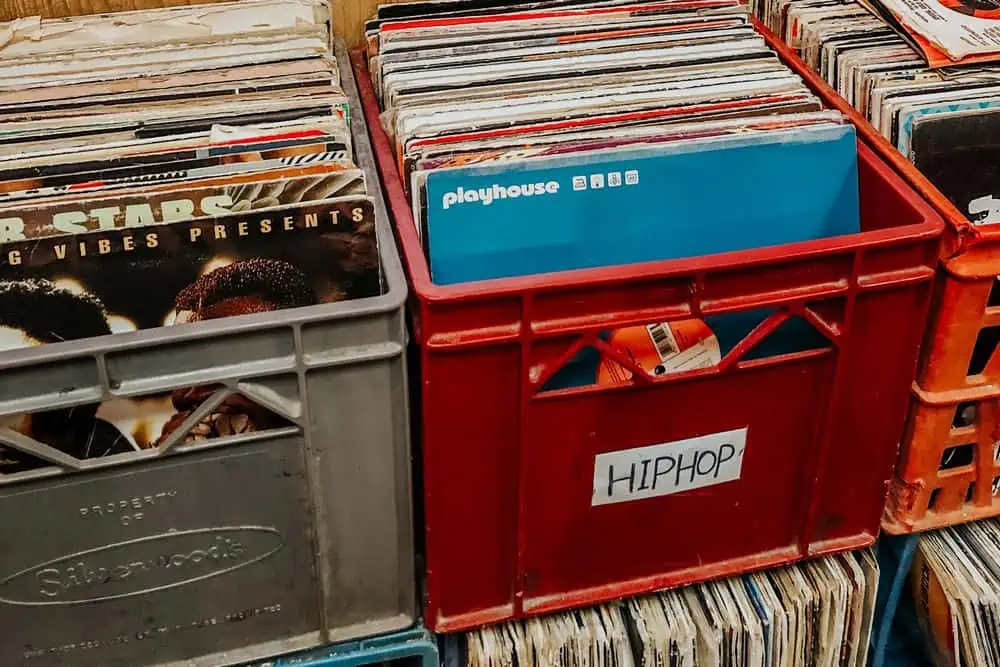
If you have a sizable vinyl record collection, you may want to start by splitting your collection down into genres first. This will give you more manageable stacks to work with.
This step is completely optional, though. Many choose to eschew it, because it can create further headaches, depending on your particular penchant for pedantry.
For example, what do you do with Bob Dylan? Does he fall into the folk category or rock? There are many artists who have crossed genres between recordings, and you may have difficulty deciding which artist belongs in which category.
Keeping the number of genre distinctions to a minimum can help reduce the headaches, though. Also, if your taste is not especially eclectic and you only have a few different genres in your collection, this step may be pretty straightforward.
Step 2: Artists
In a nutshell, most people organize their collections alphabetically. While this second step may appear straightforward at first glance, you will want to decide on a system first.
Some people choose to alphabetize their collections based on the first name of solo recording artists, while others prefer to go by the first letter of their surname. For example, you can file Jimi Hendrix under either “J” or “H,” depending on your preference.
When alphabetizing records recorded by bands rather than by solo artists, most people also choose to ignore the initial “The” that is present in many band names.
For example, you would file The Rolling Stones under “R” for “Rolling” and not under “T” for “The”. Otherwise, your “T” section could grow monstrous. Under this system, Henry Rollins could sit immediately after The Rolling Stones.
Step 3: Chronological Release Order
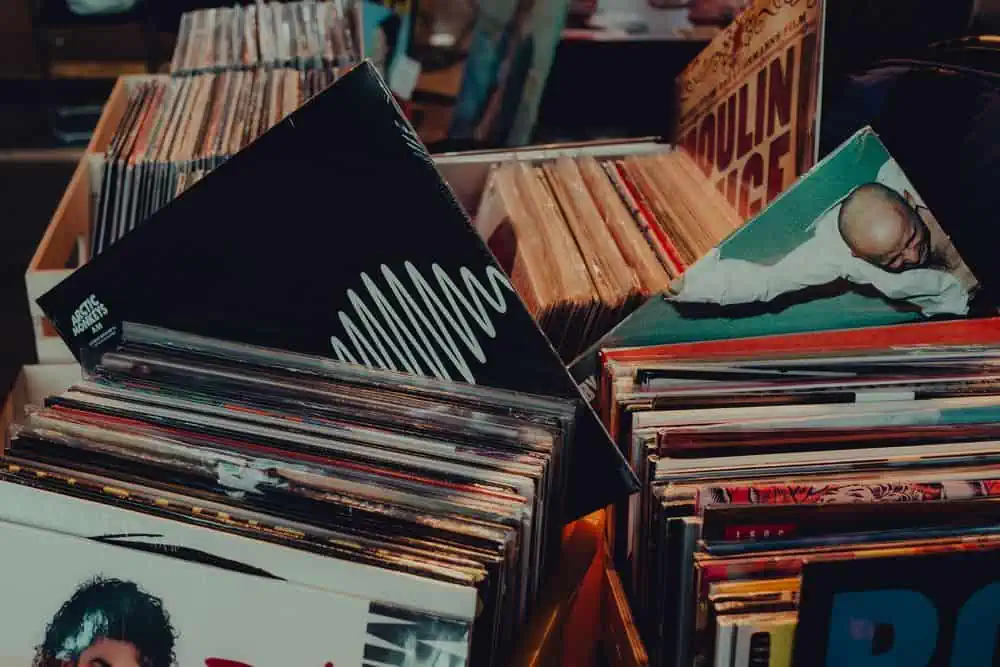
Once you have sorted your vinyl collection into artists, the next step would be to arrange the different records that you own by the same artist. Of course, you could choose to do this alphabetically, placing Bob Marley’s Exodus before Natty Dread.
But most people opt to arrange a given artist’s records chronologically, placing 1974’s Natty Dread before 1977’s Exodus. Ultimately, it’s your vinyl collection and you can choose the method that best suits your collection.
The one aspect of this that may perturb those with pedantic tendencies, is how to file re-releases. If you own a copy of The Beatles’ Abbey Road: 50th Anniversary Edition, which was released in 2019, do you file it under 2019, or under its original 1969 release date? Again, the choice is yours.
Alternative Ways To Organize Your Vinyl Records
Of course, the system we just outlined is only one possibility among many. Let’s take a look at a few alternative methods for organizing your vinyl record collection.
Alternative Method 1: Purely Chronologically
The above method of organizing your vinyl records is the most popular, but it’s not the be-all and end-all of the conversation. As an alternate way of arranging your collection, you can opt for pure chronology.
That’s to say, you organize your record collection based solely on the date of the records release. Once you have your records arranged this way, you can then place markers between records to denote the year to make it easier to find a certain record when you need it.
Alternative Method 2: By Color
For an especially aesthetically pleasing result, you could also choose to organize your vinyl collection by color. Some will argue that this system makes it harder to find the record you are looking for, but there’s no denying it will be visually pleasing, especially on a shelf.
You can start with the reds on the left and then work through the colors of the rainbow—orange, yellow, green, blue, indigo, violet—as you work towards the right.
However, be aware that doing so may reveal that a large portion of your record collection has the same color spine. White is a particularly popular color for record spines. It could lead to a less-pleasing result than you had hoped for.
Alternative Method 3: Complete Chaos
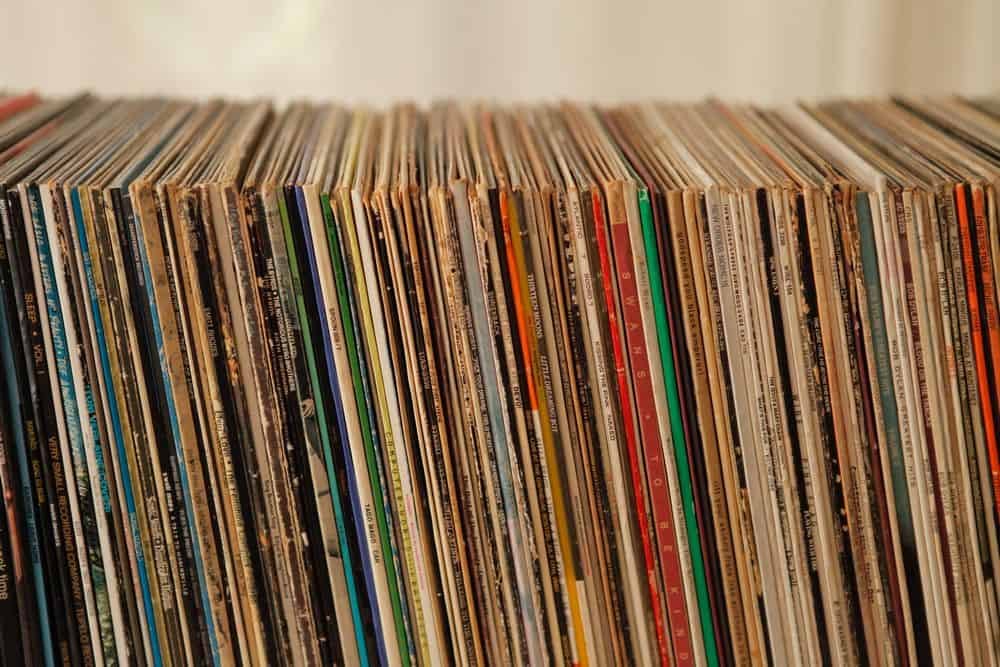
The other alternative is more of a lack of a method than an actual method itself. Complete randomness. Simply pop your vinyl records back on the shelf in a random location after you have finished listening to them.
While many of you may be recoiling in horror at the idea of utter chaos, it can lead to some serendipitous discoveries when you are trying to locate a certain record.
During your hunt for one particular record, you may mistakenly pull out a different record and be pleasantly surprised. You may have just rediscovered an album that you had forgotten even existed, let alone that it was a part of your extensive collection.
While the occasional pleasant surprise may entice some of you to go the random route, the much longer searches for specific records will put most people off.
Organizing Vinyl Records: Related Questions
Next, we will look at some additional questions related to the organization of a vinyl record collection. If you have ay further questions, please feel free to ask them in the comments below
Where Should You Store Your Collection Of Vinyl Records?
You want to store vinyl records in a cool place—not too cold, but not too hot. If the vinyl is exposed to high heat for extended periods of time, it can lead to warping and other damaging effects. Your records should also be away from direct sunlight for the same reasons.
Fixing warped vinyl records is not easy. It is either risky or costyl, depending on which method you choose. So you definitely want to do what you can to prevent warping in the first place.
Should Vinyl Records Be Stored Flat Or Upright?
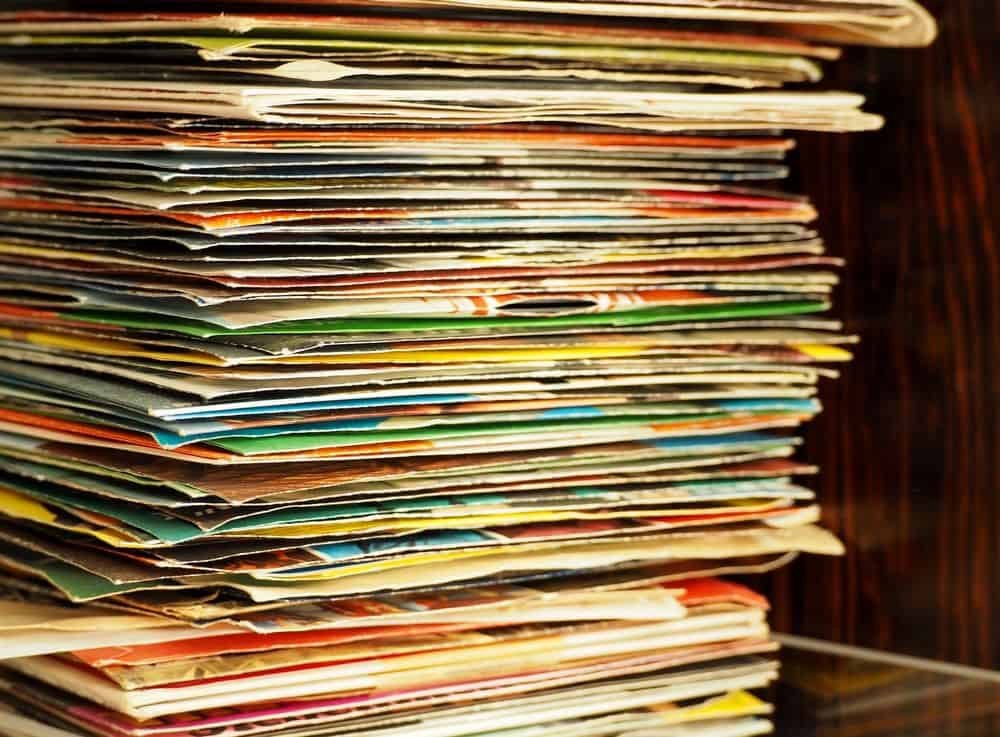
Your records should be stored vertically rather than horizontally or flat. Archival record boxes are designed to hold records upright and store them vertically. Storing vinyl records flat can place too much pressure on the records that are lower in the stack, causing damage, like warping, over time.
What Is The Best Way To Protect Vinyl In Storage?
Although the inner and outer sleeves will prevent most debris from getting onto your records, an airtight vinyl bag can give you that extra protection to ensure your records are not damaged. This is highly recommended for collectors and those in possession of valuable or vintage releases.
Vinyl Record Organization: Final Thoughts
I hope our guide on how to organize vinyl records has helped you get your collection in order. If our favored method didn’t work for you, hopefully one of the alternatives did. Or, at the very least, led you to a method that does work for you.
In the end, you are obviously free to organize your record collection in any way you see fit. As long as it makes sense to you and you are able to find a record when you want to find it, that is all that matters.
Part of my record collection got soaked with home heating fuel. Is there any hope of salvaging them?